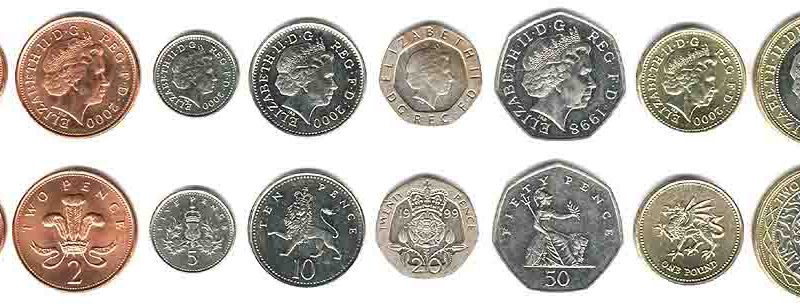Readers of classical English literature, from Dickens to Conan Doyle, have drawn attention to the variety of monetary units mentioned in these works.
“How does the pound differ from the guinea, and how do they compare with crowns, pence and shillings?” – any modern reader has a question.
Today, in most countries, a decimal monetary system has been adopted: there is a basic monetary unit, which is equal to one hundred small units.
Great Britain switched to the decimal system only in the second half of the 20th century. The main currency was the pound sterling, the bargaining chip was the penny. From the time of King Charlemagne and until recently, there was such confusion in the monetary system that only those Englishmen who were distinguished by accuracy and pedantry could understand it.
Until 1971, the relationship between monetary units looked like this:
1 pound = 20 shillings
1 sovereign = 20 shillings
1 guinea = 21 shillings
1 crown = 5 shillings
1 half crown = 2.5 shillings
1 florin = 2 shillings
1 shilling = 12 pence
1 penny = 4 farthing
In one pound, therefore, there were 4 crowns or 8 half-crowns or 10 florins or 20 shillings or 240 pence or 960 farthing.
The pound sterling has been the main currency in England since 1694, when the corresponding banknotes began to be issued. However, the word itself appeared much earlier, back in the 12th century. It meant, oddly enough … pound sterling! Sterling was a small silver coin, so small that it was sometimes considered by weight.
The Sovereign is a gold coin minted since 1489 and equal to 20 shillings. A sovereign was a coin equivalent to a paper pound sterling.
Guinea is a gold coin that was first minted in 1663 from gold brought from Guinea. It was valued slightly more than the pound and the sovereign. Until recently, if a sum of 21 shillings appeared somewhere in financial calculations, it was automatically renamed guinea.
Penny is a small coin that originated in the 8th century. It was minted first from silver, from the end of the 13th century. – from copper, and from the second half of the 19th century. – made of bronze.
In 1849, an attempt was made to bring the monetary system of England to a decimal one. Then came the florin, equal to one tenth of a pound. However, nothing has changed, except that another type of coins appeared in the country, which went along with the traditional shillings and crowns.
The people of Great Britain themselves were not confused in this complex system. On the contrary, it had some peculiar convenience in it – the aristocrats did their calculations in pounds and guineas and never once held a farthing in their hands, and the poor did not see anything larger than pence and shillings.
In 1966, the British government began thinking about monetary reform. But to reform quickly meant to destroy the centuries-old habit of English life. Therefore, only 3 years later, in 1969, the residents of Great Britain were introduced to the 50 pence coin – the first step towards the decimal system. In 1971, the country officially switched to the decimal system, but until 1982, old and new coins circulated in parallel. New, “decimal” pence could be distinguished by the inscription “New penny”.
In modern English, the word pound is used, and sterling is added to distinguish it from other pounds. In colloquial language, the word quid can be used to refer to the pound sterling.
© Times of U

